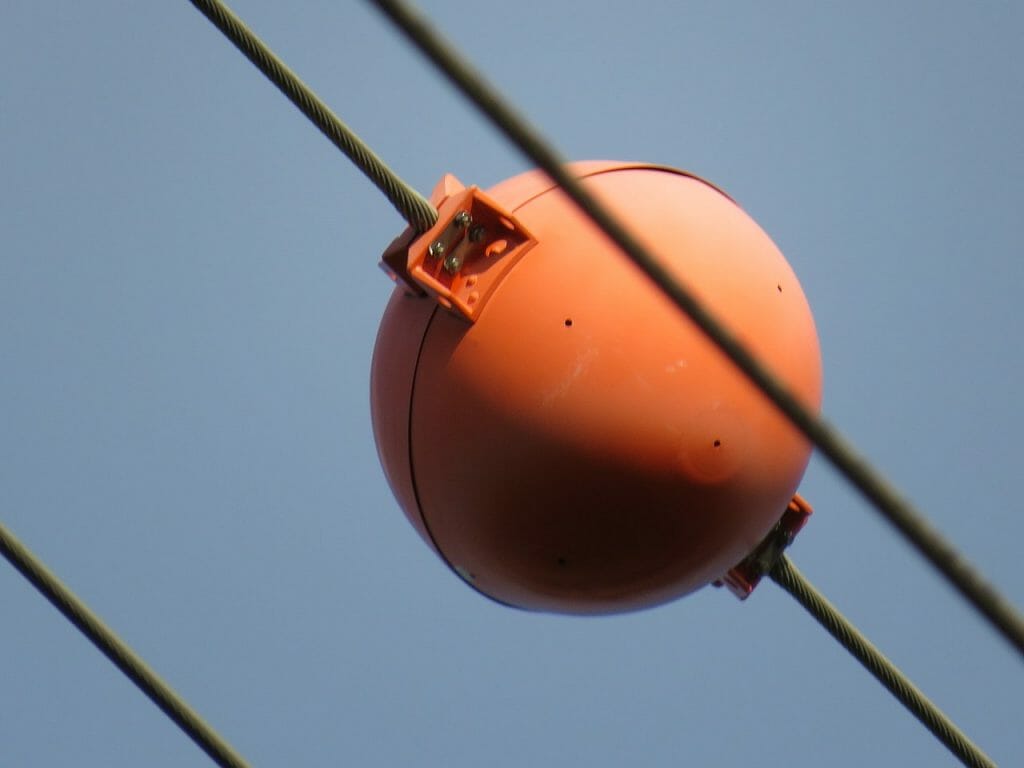Some children think these are basketballs stuck in high voltage lines. Meanwhile other people guess that these are some sort of fuses. But what are these big spheres on overhead power lines actually for?
These spheres can be seen in most countries. Although you are more likely to notice them on overhead power lines, sometimes are are used on ropeways and support tensile cables. And they are not some powered devices or fuses at all (at least most of them are not).
They are overhead wire markers. If you noticed them, they are doing their job well. Although, obviously, they are not there for random passersby – they are used to warn aircraft pilots.

Although for you these big high voltage lines are easy to notice, they can be nearly invisible for an airplane pilot. Bright blinding sunlight or a strong rain can make these dangerous cables difficult to notice and so they have to be appropriately marked in order to avoid accidents. This is why these spherical markers are used anywhere close to airfields and airports.

Why are they spherical? Well, they don’t really have to be. Spheres are well-balanced and aerodynamic, putting less stress on the wire. However, some markers are cone-shaped and some are even illuminated.

Balisor is a system of illuminated beacons for high voltage power lines. They are quite interesting because they are powered by the energy from the line that they are mounted on. The power line acts as the main capacitor plate, creating a strong electric field, which acts upon a secondary capacitor plate attached to the neon lamp. The entire system looks like this:

As you can see, Balisor has a neon light, which is bright, but also easy to start. These illuminated beacons are particularly effective at night and consume barely any power. They are used in places where aircraft are likely to pass during the darker times of the day.

Overhead wire markers are not just for aircraft. They are also used over roads where taller machinery may be passing. They can also improve visibility of the lines that are stretched above rivers and lakes, warning sailboats about the potential snag.




